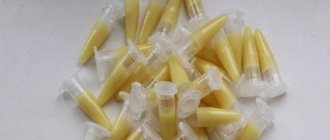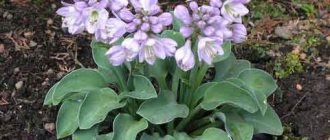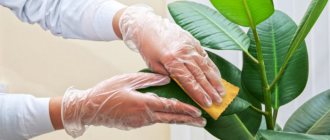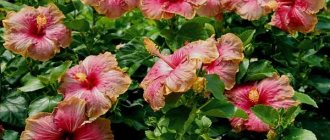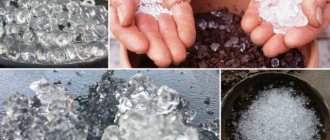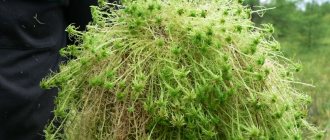We are used to planting seeds for seedlings, planning for the future harvest. But generative propagation is characteristic not only of tomatoes and cucumbers, but also of tropical flora. We usually buy potted flowers in stores, but meanwhile, you can grow a houseplant yourself at no extra cost. Of course, you will have to wait more than one year for it to bloom. But the wait is worth it! Just imagine how interesting it is to observe the entire life cycle: from a small seed to an adult plant, to monitor the growth and development of your “ward”. We will tell you in this article which indoor plants can easily be grown from seeds at home.
13 indoor plants that are easy to grow from seeds at home
Adenium
Nowadays, stores offer a wide selection of seeds of colorful varieties of desert rose. This is exactly what this beautiful and unpretentious flower is called. By its nature, adenium is not picky: all it needs is bright sun and rare watering.
Adenium
Seedlings appear on the 7th–10th day. As they grow, they become stronger and form a thickening at the base, the stem grows in width, and foliage forms at the top. After 2-3 years, the newly made succulent will delight you with flowers. And grown adeniums will make a real garden in the Bonsai style.
Read more about the features of sowing adenium seeds in the article Propagation of adenium by seeds.
Cyclamen
The Alpine violet, as this flower is also called, is not inferior in beauty to the desert rose, although it comes from the cool regions of Europe. Nowadays you can get varieties with double flowers from collectors. Given suitable conditions, cyclamen can bloom almost continuously.
Cyclamen. © Basil DB
The plant obtained from a seed actively grows its underground part for the first time, and in the third year it forms flower stalks. Caring for it will not be difficult, it is only important to provide the cyclamen with a cool winter - this flower does not like heat and stuffiness.
Read more about growing cyclamen from seeds in the article Cyclamen - the flower of the sun.
Features of seed propagation of indoor plants
At first glance, there is nothing simpler, and the seeds are usually inexpensive. You can buy seeds of the most exotic plants, cuttings of which cannot be sent by mail due to the risk of damage during transportation. Postal delivery of light bags with them will not present any particular difficulties - you just need to place an order.
So in theory, but in practice “surprises” are possible. Those who have encountered this can tell you about some of the pitfalls: are the seeds the right ones, what is their freshness and ability to germinate. Even seeds purchased in a store in the appropriate packaging may be from the series: “Don’t believe your eyes.” In addition, it takes quite a long time to grow the selected plant - cuttings are much faster. For example, a banana from a cutting in a home culture will bear fruit in the second year, and from seeds - in the third or fourth.
Even if you have the opportunity to collect seeds from plants you like, you need to consider whether this is a hybrid variety. Such seeds can sprout with unpredictable results due to the loss, most often, of varietal characteristics.
Date fruit
Don't rush to throw away the dried date pits! If you love indoor plants, you can become the owner of a miniature palm tree. It's hard to believe that a real giant grows from a small bone. But this is exactly how palm trees reproduce in nature.
Phoenix. © Patch
However, you should not expect quick results, the seedling will appear in a month, and the date grows for a very long time, adding about 5-7 cm per year. At the same time, a desert plant will still require a minimum of care, the main thing is to provide it with bright light and moderate watering.
For details on caring for date palms indoors, read the article Indoor date palm.
Table of germination time of seeds of popular indoor plants
| Name of house plants | Fast germination from 4 to 12 days | Average germination from 12 to 17 days | Slow germination over 20 days |
| Ambutilone - Kanatnik | ✔ | ||
| Adenium | ✔ | ||
| Agave | ✔ | ||
| Balsam | ✔ | ||
| Begonia | ✔ | ||
| Washingtonia | ✔ | ||
| Gardenia | ✔ | ||
| Hibiscus | ✔ | ||
| Indoor pomegranate | ✔ | ||
| Crassula | ✔ | ||
| Oleander | ✔ | ||
| Pelargonium | ✔ | ||
| Sansevieria | ✔ | ||
| Streptocarpus | ✔ | ||
| Fatsia | ✔ | ||
| Date palm | ✔ | ||
| Hamerops palm | ✔ | ||
| Cyclamen | ✔ |
Plumeria
Another representative of tropical vegetation is plumeria. This amazingly beautiful flowering plant is also called frangipani. The flowers, opening, exude an incomparable, exotic aroma. In addition to the classic white, the flower has pink, crimson, yellow and even orange colors in its “reserve”.
Plumeria. © Jacob Tidwell
Getting it from a seed is not at all difficult, and an adult plant will not cause any trouble. Frangipane grows very quickly, reaches impressive sizes (up to 2 meters), requires frequent replanting and a considerable area indoors, abundant watering and a sunny location.
Browallia
Perennial plant for rooms and interiors. Browallia is grown as a bush 25-30 cm high and 30-35 cm in diameter; it forms well and blooms profusely and for a long time in response to attention and care. The plant is highly branched, with flexible shoots, perfectly combining the color of lavender-blue flowers and dark green foliage. The flowers are star-funnel-shaped, with a durable texture, up to 2-3 cm in diameter, axillary or collected in loose racemes. Browallia is unpretentious and quite cold-resistant. Prefers a bright, ventilated place; in summer it is protected from direct sunlight. The temperature is 24°C in summer, several degrees lower at night, about 17°C in winter, 15°C at night.
Browallia can also be grown as an annual in flower beds, borders, and in hanging baskets in places protected from the wind.
Pelargonium
This flower can be called a record holder for the number of varieties and abundance of colors. Amazing pelargonium has long settled on the windowsills of apartments and made itself at home there. The seeds grow into strong plants capable of flowering in the second year.
Pelargonium (Pelargonium). © seitayoko
Among flower growers there are collectors and breeders of pelargoniums, owners of a whole range of colors. A minimum of effort and your collection will also be replenished with a blooming specimen. Provide a sunny window sill for the pelargonium and do not forget to water it regularly.
Read more about growing pelargonium indoors in the article Pelargonium is the hardiest of the beautiful flowering plants.
How to Plant Flower Seeds: Where to Buy Seeds
Now that you know when and how to grow indoor and outdoor plants from seeds, it's time to collect some seeds. To choose the flowers you'd like to grow, check out our Flower Planting Guide.
When growing flowers from seeds, bulbs, cuttings or transplants, always purchase your planting material from a safe place to ensure the following:
- Do you know what kind of flower or plant you planted?
- Flowers or seeds come from a healthy source (i.e. they are properly matured)
There are several places to buy your seeds both online and offline...
- Your neighbors. Are you impressed by your neighbor's flower garden? Ask them where they get their seeds or seedlings. They may even give you free flowers the next time they divide their perennials.
- Local nurseries or garden centers
- Seed catalogs (offline and online).
Nolina
The second most popular and unpretentious palm tree, which easily grows from seeds, is bocarnea. In a greenhouse, seedlings appear within a month. Unlike dates, nolina grows quite quickly at first, then its growth slows down.
Nolina
This is one of the easiest plants to care for, which is recommended for “lazy” gardeners or for those who are rarely at home. By storing moisture in its trunk, nolina can survive without watering for several weeks. Her original appearance only adds points to her.
Read more about growing nolina from seeds in the article Nolina, or Bocarneya - “bottle tree”.
Delonix Royal
This semi-evergreen tree grows up to 10 m in nature and resembles a wide umbrella with its spreading crown. In our area it is grown as a houseplant.
Elegant bright green doubly pinnate leaves 30-50 cm long folded at night
.
In spring and early summer, the tree is covered with large bright red flowers, about 10 cm in diameter, collected in large clusters. compete with orchids
in beauty ; they consist of four red petals with a “leg” and one larger vertical petal with yellow and white spots. Trees blazing with precious flowers present a delightful spectacle that lasts for 1-2 months. Later, lignified flat pods up to 60 cm long containing large seeds are formed.
Passionflower
Let’s move on from palm trees and ornamental flowering plants to more useful ones—fruit-bearing ones. This is, for example, passion flower, also known as passion fruit. Outlandish flowers turn into fruits, which in nature have an unusual taste. It is also possible to get edible passion fruit at home, but it will take a little effort.
Passionflower (Passiflora). © elinook_baika
Passionflower is demanding of humidity and light, especially in winter. It also needs regular watering. At the same time, the decorative laina grows quickly and takes pruning well.
Read more about indoor cultivation of passionflower in the article Passionflower - an exotic vine “not for everyone.”
Eustoma
This exotic beauty is very reminiscent of a rose, but it has no wit. Looks great both in the front garden and indoors. Although it is more suitable for indoors - eustoma blooms very late, so in open ground it will not delight you with its beauty for long.
The following varieties will look most aesthetically pleasing in a home interior:
- Echo white F1;
- Echo yellow F1;
- Echo Champagne F1;
- Echo purple F1;
- Echo blue F1.
How to sow and grow
December or January is chosen for sowing eustoma. She does not tolerate transplantation well, so we recommend that you immediately buy her a beautiful pot and grow her in it.
Eustoma seeds are scattered on the ground. They are small enough that you can mix them with sand. Next, cover the pot, place it in the sunniest place in the house and wait for the first shoots. The temperature should be 20-22 degrees. The soil must be constantly moistened and not allowed to dry out. You need to ventilate once a day until the first shoots appear.
Remove the glass when you see the first shoots. This will happen in a week or two. They need a different temperature regime - about 16-18˚C.
As we have already seen, growing plants from seeds is easy and even interesting.
Especially when the seeds are of high quality, as in the Becker store. From us you can buy seeds of annual, biennial and perennial flowers by selecting from their online store catalog. Author: Natalya Palamarchuk
Hot pepper
Miniature varieties of peppers not only look impressive, but also provide fruit for all lovers of spicy food. After flowering, the bush, like a Christmas tree, is decorated with colorful fruits. This outfit looks truly impressive.
Hot pepper (Capsicum). © Penn State Horticulture
Sowing indoor pepper is identical to growing its garden “namesake”. The seeds germinate quickly, and the newly created plants bloom in the first year, forming edible fruits. The only difficulty is to provide the pepper with artificial lighting and a high level of humidity over the winter.
Read about the features of growing indoor hot peppers in the material Indoor hot peppers - varieties and growing features.
Pomegranate
Of course, it will not be possible to grow large and juicy pomegranate fruits in closed ground conditions. But it is quite possible to get a spectacular plant and quite edible small pomegranates. Decorative pomegranate is distinguished by its miniature size and lush flowering.
Pomegranate (Punica granatum). © 2dacha
The seeds germinate in a couple of weeks, and the fruits appear in adult specimens. Caring for this delicate tree requires some skill. Regular watering, the presence of light even in winter, coolness and humidity will completely pay off with the beauty of flowering and the fruits that this exotic plant will give you.
Read more about growing pomegranate indoors in the article Indoor pomegranate.
Decorative foliage
Many deciduous plants that we carefully grow in our apartments grow right outside in tropical countries. By planting seeds at home, you can also get a spectacular decorative flower. Fast-growing ones include orange Chlorophytum , Dracaena , Fatsia , elegant Jacaránda and even the beloved Ficus benjamina.
Ficus benjamina. © Marcio Rogerio
All these plants have similar care requirements: bright but diffused light and regular watering. In winter, some representatives of evergreens may lose their leaves due to dry air, but in the spring they restore their crown again.
Read about the features of growing Ficus Benjamin in the article Variegated Ficus Benjamin.
Varieties
You can grow homemade flowers from seeds using normal indoor conditions. Of course, this process is labor-intensive, but exciting. First, the seeds are germinated in small greenhouses, and then the grown seedlings are placed in pots. At home you can grow perennial plants - cacti, ficus, flowers with decorative foliage or flowers that delight us with flowering. Young specimens can be sprouted from seeds or from seeds, such as mangoes or dates.
Varieties of plants that can be grown from seeds at home.
- Citrus plants - you can grow tangerine, lemon, orange, grapefruit at home. Planting material is taken from ripe fruits, washed, treated with a growth stimulant and planted in a greenhouse to a depth of 2-3 cm. Sprouted young specimens need to be watered and fed every day, including spraying with a spray bottle. After rooting, the cuttings begin to bloom and bear fruit already in the 4-5th year of life, in some cases this happens already in the 3rd year. For successful growth and development, plants require a lot of light and heat. The optimal temperature in summer for them will be 23-26°C.
- Plants with decorative foliage - most often grown are variegated ficus, dracaena, Japanese fatsia, jacaranda, croton, chlorophytum, multi-colored coleus, and calathea. In order for decorative foliage plants to look attractive, their development requires a sufficient amount of sunlight and good fertilizing with fertilizers. In winter, when central heating radiators begin to work in apartments, many of these plants experience stress due to dry air and can lose their leaves. Therefore, for wintering they are moved to a cool place or regularly sprayed and humidified the air around them.
- Plants from the Begonia family - the seeds of these house flowers germinate well, but they are so small that they are sold in granular form. Begonia varieties are varied: ever-flowering “Monza Rose”, “Havana Mix”, large-flowering Orange, White, Red. Today there are many varieties of hybrid begonias, they bloom mainly in the summer, and if desired, they can be transferred in the summer to the garden or dacha, where in the open ground the flower will gain strength and get stronger, so that in winter it will be returned to the apartment until the next dacha season.
This is interesting: How to keep lemon fresh all winter - storage methods at home
- Palm trees - most often at home, exotic lovers grow date palms from date seeds. Such planting material can always be found at any time of the year. The seed is planted vertically, to a depth of 3-4 cm. Provided regular watering, the sprout appears quite quickly - after 2-3 weeks. A young plant does not need to be fed at first, but as soon as it actively begins to grow, this will serve as a signal to add a complex of micronutrients to it.
The date palm quickly adapts to environmental conditions and grows into a tree of luxurious beauty.
- Pomegranate is a heat-loving southern plant that can be grown from seed. Breeders have developed a variety of dwarf ornamental pomegranate that grows successfully indoors, blooms and produces small fruits. The seeds have a peculiarity - their germination rate is high only in the first year of collection, and then it rapidly decreases. Fresh seeds germinate within 2 weeks after planting in the ground. The plant needs regular watering, warmth in the summer, as well as coolness and abundant lighting even in the winter.
- Plants of the Gesneriev family are common species that have gained popularity among indoor gardeners. These include Usambara violets (which bloom for 10 months a year), gloxinia (blooming with purple flowers that look like large bells), streptocarpus (white, pink, red flowers), Achimenes with expressive marbled leaves, ampelous columna and others representatives of this family. They all have a huge number of different varieties, but the main thing is that they take root well in modern city apartments.
- Cacti are evergreen, drought-resistant plants that can also be grown from seeds. A special feature when planting them is that for cacti the substrate should consist mainly of sand and a small part of humus. When irrigating with a spray bottle, care must be taken not to over-moisten the soil and not cause the sprout to rot.
Growing a cactus at home is quite an interesting activity, and a ready-made adult specimen will cost you much less than buying it in a store.
- Miniature varieties of hot peppers - the plants germinate quickly and respond well to care, and they begin bearing fruit the same year you planted the seeds. This pepper looks very attractive, its fruits can be eaten, and if some of them are left until fully ripened, you will again have a large amount of planting material to repeat the growing cycle again in the spring.
Growing plants from seeds allows you to obtain the most viable specimens that are not infected with infectious diseases and are resistant to pests.
Adenium
Nowadays, stores offer a wide selection of seeds of colorful varieties of desert rose. This is exactly what this beautiful and unpretentious flower is called. By its nature, adenium is not picky: all it needs is bright sun and rare watering.
Adenium
Seedlings appear on the 7th–10th day. As they grow, they become stronger and form a thickening at the base, the stem grows in width, and foliage forms at the top. After 2-3 years, the newly made succulent will delight you with flowers. And grown adeniums will make a real garden in the Bonsai style.
Cyclamen
The Alpine violet, as this flower is also called, is not inferior in beauty to the desert rose, although it comes from the cool regions of Europe. Nowadays you can get varieties with double flowers from collectors. Given suitable conditions, cyclamen can bloom almost continuously.
Cyclamen. © Basil DB
The plant obtained from a seed actively grows its underground part for the first time, and in the third year it forms flower stalks. Caring for it will not be difficult, it is only important to provide the cyclamen with a cool winter - this flower does not like heat and stuffiness.
Plumeria
Another representative of tropical vegetation is plumeria. This amazingly beautiful flowering plant is also called frangipani. The flowers, opening, exude an incomparable, exotic aroma. In addition to the classic white, the flower has pink, crimson, yellow and even orange colors in its “reserve”.
Plumeria. © Jacob Tidwell
Getting it from a seed is not at all difficult, and an adult plant will not cause any trouble. Frangipane grows very quickly, reaches impressive sizes (up to 2 meters), requires frequent replanting and a considerable area indoors, abundant watering and a sunny location.
Pelargonium
This flower can be called a record holder for the number of varieties and abundance of colors. Amazing pelargonium has long settled on the windowsills of apartments and made itself at home there. The seeds grow into strong plants capable of flowering in the second year.
Pelargonium (Pelargonium). © seitayoko
Among flower growers there are collectors and breeders of pelargoniums, owners of a whole range of colors. A minimum of effort and your collection will also be replenished with a blooming specimen. Provide a sunny window sill for the pelargonium and do not forget to water it regularly.
Nolina
The second most popular and unpretentious palm tree, which easily grows from seeds, is bocarnea. In a greenhouse, seedlings appear within a month. Unlike dates, nolina grows quite quickly at first, then its growth slows down.
Nolina
This is one of the easiest plants to care for, which is recommended for “lazy” gardeners or for those who are rarely at home. By storing moisture in its trunk, nolina can survive without watering for several weeks. Her original appearance only adds points to her.
Passionflower
Let’s move on from palm trees and ornamental flowering plants to more useful ones—fruit-bearing ones. This is, for example, passion flower, also known as passion fruit. Outlandish flowers turn into fruits, which in nature have an unusual taste. It is also possible to get edible passion fruit at home, but it will take a little effort.
Passionflower (Passiflora). © elinook_baika
Passionflower is demanding of humidity and light, especially in winter. It also needs regular watering. At the same time, the decorative laina grows quickly and takes pruning well.
Decorative foliage
Many deciduous plants that we carefully grow in our apartments grow right outside in tropical countries. By planting seeds at home, you can also get a spectacular decorative flower. Fast-growing ones include orange Chlorophytum , Dracaena , Fatsia , elegant Jacaránda and even the beloved Ficus benjamina.
Ficus benjamina. © Marcio Rogerio
All these plants have similar care requirements: bright but diffused light and regular watering. In winter, some representatives of evergreens may lose their leaves due to dry air, but in the spring they restore their crown again.
This is interesting: Homeland and origin of the indoor aloe plant
Gesneriaceae
This is a whole group of magnificent flowering plants that are not difficult to grow from seeds. These include the familiar kohleria , gloxinia , streptocarpus , and saintpaulia . There are no special rules for growing new specimens; these flowers are not too demanding in care. The main thing for them is the presence of light, stable temperature and moderate watering.
Gloxinia. © Brian Valentine
All Gesneriaceae are easily propagated by leaf cuttings, but it is seed propagation that makes it possible to obtain new varieties. In stores and from collectors you can find varieties with double flowers of all kinds of colors.
cacti
Surprisingly, you can even grow cacti from seeds at home. Who would have thought that these prickly “aliens” could develop from a small seed! The rules for planting seeds are no different, only the substrate should be taken as light as possible, based on sand, and it should be moistened with a spray bottle with extreme caution.
Many cacti are easy to grow from seeds. © usbdata
It is not difficult to get seeds, and they are much cheaper than adult flowering specimens. And watching the growth of a cactus from the very beginning is very interesting!
Citrus
It is very tempting to grow your own lemon tree on the windowsill so that you can harvest it for tea and not have to run to the store for lemon unnecessarily. And this is real, just keep in mind that plants grown from seeds do not begin to bear fruit soon. Therefore, it will be possible to get the first full harvest only after 5-7 years.
Indoor lemon. © Gardenista
Citrus seeds are also in no hurry to germinate: the first seedlings will appear only after 3 or even 7 weeks. Growing citrus fruits is easier if you are no longer new to floriculture. After all, they all require a certain approach, they love moist air, stability in care and proper wintering.
For details on growing lemons from seeds, read the material Growing a lemon tree at home.
Gesneriaceae
This is a whole group of magnificent flowering plants that are not difficult to grow from seeds. These include the familiar kohleria , gloxinia , streptocarpus , and saintpaulia . There are no special rules for growing new specimens; these flowers are not too demanding in care. The main thing for them is the presence of light, stable temperature and moderate watering.
Gloxinia. © Brian Valentine
All Gesneriaceae are easily propagated by leaf cuttings, but it is seed propagation that makes it possible to obtain new varieties. In stores and from collectors you can find varieties with double flowers of all kinds of colors.
Read about the features of seed propagation of gloxinia in the material Beauty gloxinia: propagation by seeds and leaves.
Which flowers to choose for growing at home
When choosing flower seeds, you should consider several very important conditions:
- first of all, flowers, of course, should be attractive to you;
- second condition: the shape and color of the flowers should be in harmony with your home interior. Harmony always has a beneficial effect on the emotional background in the house;
- third condition: be sure to take into account the degree of illumination of the place in which the flowers will be located. It is not always possible to provide them with what they need. Therefore, when you choose seeds, carefully read the plant's light requirements.
When purchasing, pay attention to the availability of GOSTs, expiration date and manufacturer - it must be reliable.
cacti
Surprisingly, you can even grow cacti from seeds at home. Who would have thought that these prickly “aliens” could develop from a small seed! The rules for planting seeds are no different, only the substrate should be taken as light as possible, based on sand, and it should be moistened with a spray bottle with extreme caution.
Many cacti are easy to grow from seeds. © usbdata
It is not difficult to get seeds, and they are much cheaper than adult flowering specimens. And watching the growth of a cactus from the very beginning is very interesting!
Read more about seed propagation of cacti in the material Growing Cacti.
Preparing seeds for planting
Some seeds can be immediately taken from the bag and sown. Now they even produce specially processed seed material. But there are seeds that need to be prepared. This is usually written in the instructions on the bag.
- Photo of indoor jatropha + description
The most common type of preparing seeds for planting is pre-soaking in a humid environment. You need to take a cloth, moisten it well with water (you can add a little potassium permanganate to the water) and spread the seeds on it. Cover them on top with the second edge of the napkin and plastic wrap. When sprouts appear, the seeds can be planted. You can also try to germinate seeds that have expired. Some can be resuscitated quite successfully.
Palm or asparagus seeds need to be soaked for about 5-6 days. It is better to plant citrus fruits when they are fresh. For example, if you ate a fruit, plant the seed in the ground without drying it.
Sowing seeds - general rules
It is recommended to mix very small seeds with sand, and large ones, especially flat ones (the top of which is difficult to detect), should be placed horizontally so that the sprouted seedling does not go into the ground.
The process of planting seeds of tropical plants is not fundamentally different. For planting, take a light mixture based on peat and sand, moisten the surface, and do not bury the seeds too deeply. It is enough to sprinkle them with a centimeter layer of substrate.
To speed up germination, you can set up a greenhouse made of a transparent bag or glass. The containers are placed in diffused light, and the emerging seedlings are thinned out if necessary. With the appearance of the third pair of true leaves, they can be planted in a permanent place.
It is better to plant palm trees and fruit trees immediately in a pot with a supply of soil for subsequent growth. Young seedlings of these plants do not tolerate transplantation well.
Sow seeds and care for crops
If the seeds are small, then they are not deepened into the soil, but only laid out on its surface. Spread them evenly and spray them with a well-dispersing spray bottle, cover with film or glass. Medium-sized planting material is planted to a depth of 1-2 mm, large - to a depth of 1-2 cm. If you follow the folk wisdom accumulated over centuries, then the depth should be equal to the diameter of the seed material.
If you soak the soil well with water before and after planting and cover it thoroughly after sowing, then watering before emergence will not be necessary. But, if the soil still becomes dry, then spray it carefully. Do not allow large amounts of condensation to accumulate on the film. Many large drops are a sign of overheating. Remove excess moisture in a timely manner and lightly ventilate the crops.




